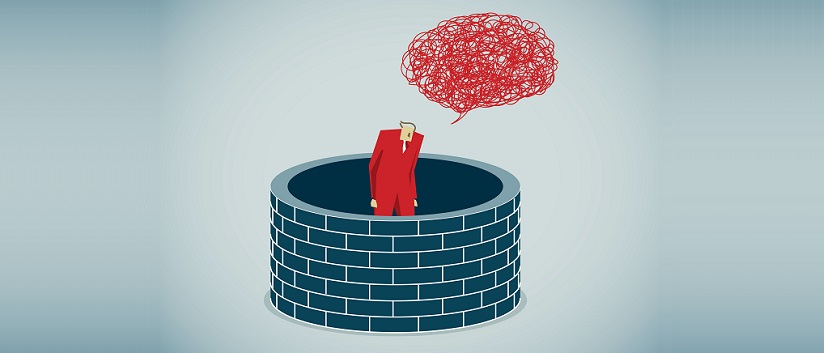Worry: how to avoid paralysis through analysis
21 March 2018
CBT therapist Michael O'Sullivan explores the difference between 'type 1' and 'type 2' worries and how to stop worrying about worry ...
Life will always be a 'vale of tears'. We will always be ‘in trouble’, in one way or another.
As a CBT therapist my job is to distinguish between life problems like paying the utility bills and therapy problems which are my job.
Making a distinction between problems isn't easy.
One of the ways that CBT for anxiety tries to address the “problem of problems” is to divide worries into either type 1 or type 2.
Paralysis through analysis
A type 2 worry is when we” worry about worry”.
'We usually start to ask “what if” questions in an attempt to achieve this certainty'
For example, if a difficult situations arises, we think about how we can solve it and we come up with an answer. But if it is type 2, any answer which is not 100% certain causes problems.
We usually start to ask “what if” questions in an attempt to achieve this certainty.
We end up chasing our tails until we are consumed with anxiety. Type 2 worries are summed up by the phrase “paralysis through analysis”.
Fearing uncertainty
Type 1 worries feel like they have an answer.
For example, if our car breaks down there is an answer which could be anything from calling the AA, to fixing it ourselves.
- See also: Mental Health Today's 'Disorders Explained' information hub
But Type 1 worries also don’t have a certain answer. Although we accept this and we ‘live with it’.
Type 1 worries can become type 2 worries if we begin to search for certainty.
Letting go
'Struggling to find certainty will pull you under the quicksand. Instead, the right tool is to accept and let go'
Looking for certainty with type 2 worries doesn’t work.
Struggling to find certainty will pull you under the quicksand. Instead, the right tool is to accept and let go.
Accepting and letting go is always a better approach with any form of quicksand. It will feel risky to start with because switching off thoughts is tough.
The paradox of worry is that it is trying to keep us “safe”.
Worry feels like it prepares us for any catastrophe waiting in the wings.
Although this makes sense, the sting in the tale is that we feel continually anxious.
Stop second guessing
An alternative to worrying “inside of our heads” is to change the focus of our attention outwards on whatever is the task in hand”.
'If you problem solve in one specific area then you can apply the same problem solving to other areas'
Dealing only with the problem in front of us stops us from second guessing the problems that might arise in the future because if we think about those potential difficulties, we will be overwhelmed.
Focusing on the specifics of the problem in hand is challenging because we will ask ourselves how useful it is.
However, the specific details of the problem in front of you will come up time and time again.
In depression and anxiety, history repeats itself.
This means that if you problem solve in one specific area then you can apply the same problem solving to other areas.
Fear of uncertainty is a phobia.
We conquer our phobias through inoculating ourselves to the unknown.
In the history of medicine the Small Pox inoculation involved giving people a tiny amount of cow pox.
As we become more tolerant to uncertainty, we become more resilient, so try something new tomorrow. What is the worst that can happen?


Comments
Write a Comment
Comment Submitted